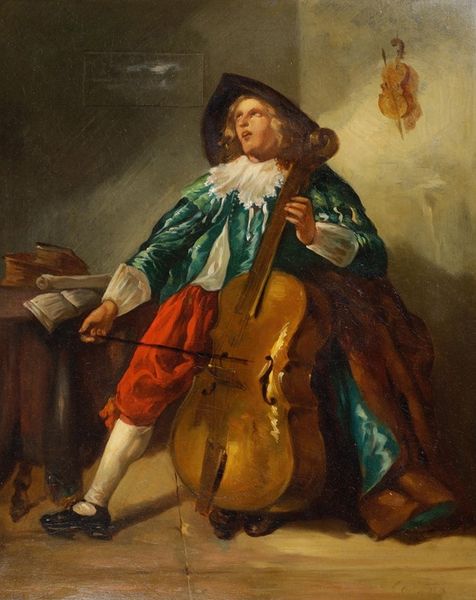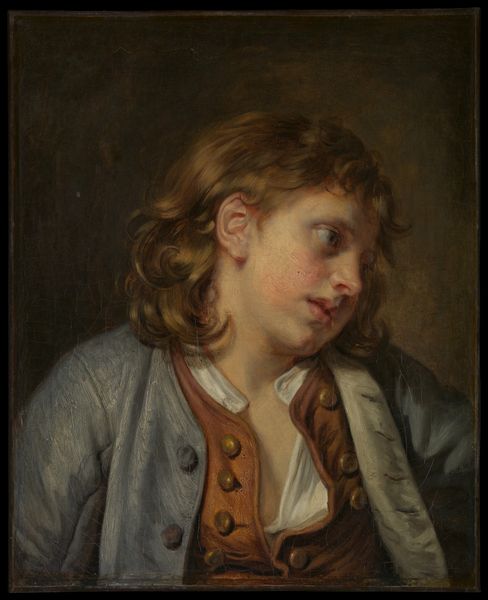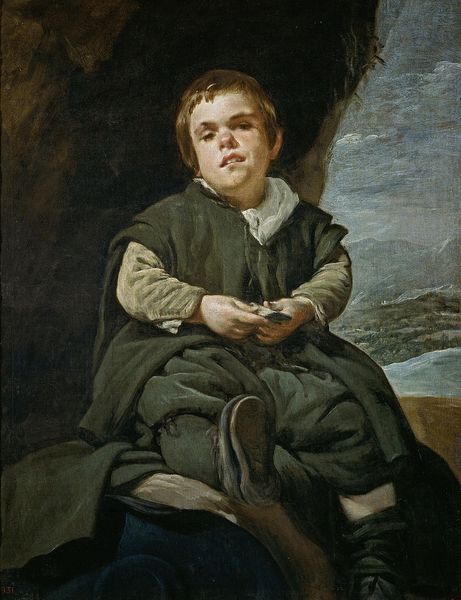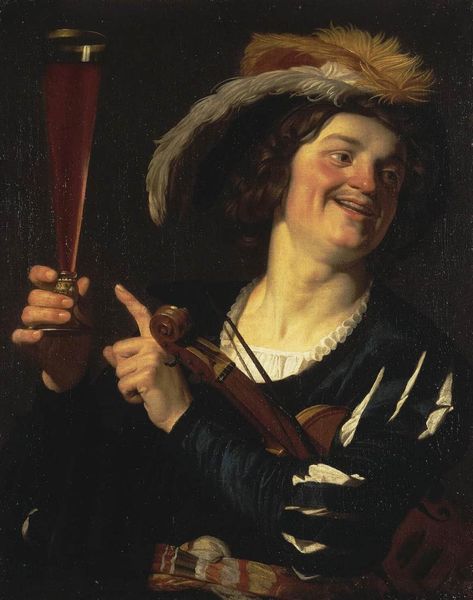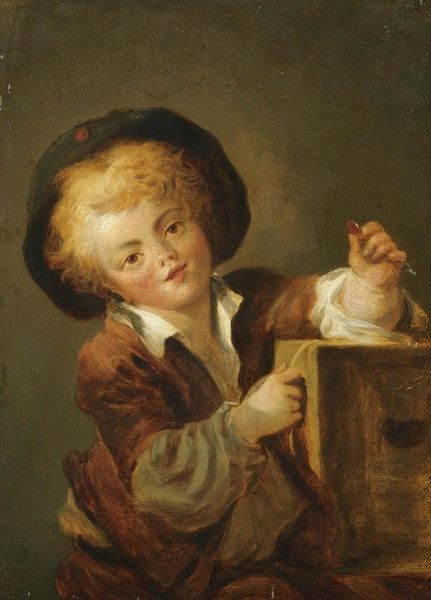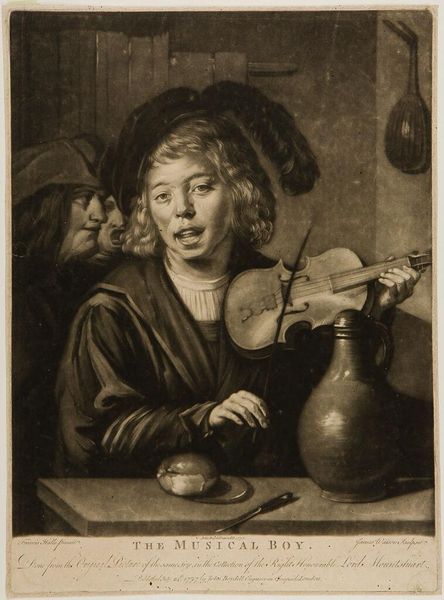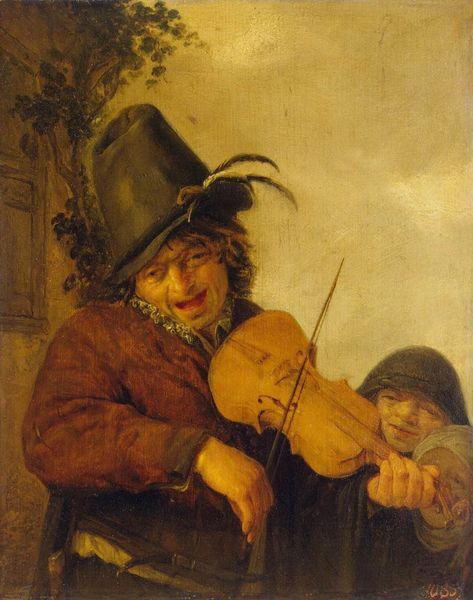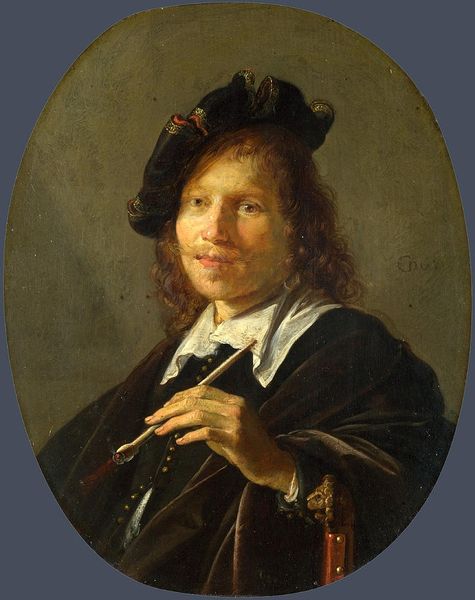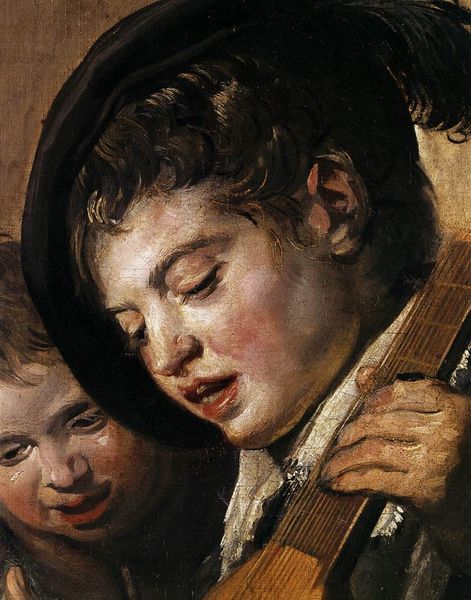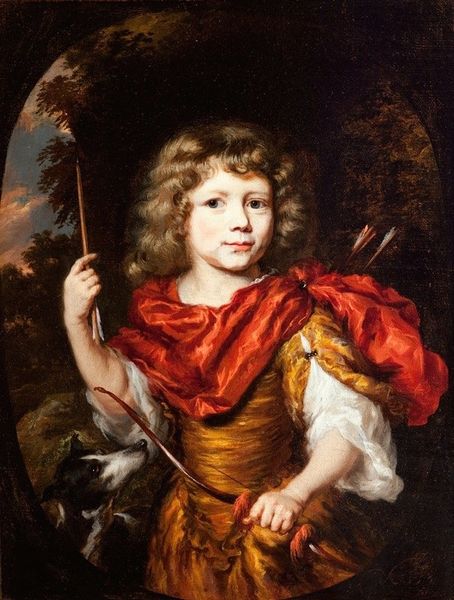
painting, oil-paint
#
portrait
#
baroque
#
dutch-golden-age
#
painting
#
oil-paint
#
figuration
#
genre-painting
Dimensions: 72.1 x 59.1 cm
Copyright: Public domain
Editor: Here we have Frans Hals's "Boy with a Lute," painted around 1625 using oil. It has such a cheerful, almost carefree energy to it, wouldn't you agree? What stands out to you about this particular piece? Curator: Its compositional structure is remarkably dynamic. Notice how Hals employs loose, visible brushstrokes, especially in rendering the boy’s clothing and the lute itself. This impasto technique, along with the strategic placement of light, contributes to a sense of immediacy. Editor: So, it’s less about a perfect likeness and more about capturing a fleeting moment? Curator: Precisely. Focus on how the composition avoids rigid lines, embracing asymmetry. The angle of the lute, the tilt of the boy's head – these elements contribute to a vital and unrestrained quality, highlighting the properties of motion versus stillness. The muted backdrop against the vibrant orange is worth considering, too. What do you make of it? Editor: I guess that, structurally, the muted tones allow the eye to be drawn back to the brightly coloured lute. Curator: Yes, consider the strategic use of color and light. It is an inherent component to direct our gaze and create focal points. How does Hals use contrasts to define form and space in this two-dimensional picture? Editor: Now that I consider the painting, that all sounds rather well-calculated! It really does come together wonderfully. Curator: It is through that synthesis, by experiencing the inherent tension between form and movement, the planned versus unplanned, that we fully grasp Hals's visual language.
Comments
No comments
Be the first to comment and join the conversation on the ultimate creative platform.
